Southern Baja, Mexico: Exploring Beyond Los Cabos
Away from the resorts, bars, and crowds of Cabo San Lucas, southern Baja offers quieter pleasures: diving with sea lions and snorkeling with whale sharks near La Paz, desert hikes to hidden hot springs, and glorious beaches and ocean views near Todos Santos. Nomad Alicia shares her experience.
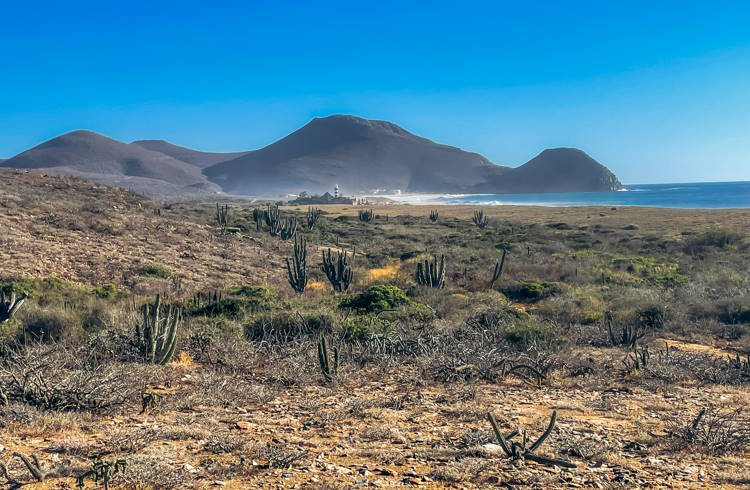 Photo © Alicia Erickson
Photo © Alicia Erickson
Rugged mountains rise from a narrow swath of a peninsula, where the desert meets the sea. Twisted sage-green cacti rise from parched brush in crevices and along sloped valleys. Outwards, deep blue sea spans as far as the eye can see where whales can often be spotted breaching.
Baja California Sur (BCS), a region relatively isolated from mainland Mexico, is one equally underestimated. This narrow peninsula state offers worlds beyond the curated resorts and nightlife hot spots of Los Cabos (encompassing Cabo San Lucas and San Jose del Cabo), on the southern tip of the peninsula. Drive in every direction from BCS’s main starting point and you’ll stumble across desert mountains and cacti-dotted canyons, dusty towns steeped in history, and wide, wind-swept beaches. Thrill seekers will find a variety of outdoor adventures while foodies can indulge in an endless slew of street side taco and ceviche stands.
- La Paz and outdoor adventures
- Diving and snorkeling with sea lions
- Discovering the secrets of Todos Santos
- Getting around
La Paz and outdoor adventures
The capital of BCS, La Paz, is a sprawling town on the center of the eastern coast that mixes adventure tourism with a local beat. We stayed a fair distance outside the main boardwalk area, known as the Malecon, which is clogged with touristy restaurants. Our unassuming neighborhood boasted tiny taco, ceviche, and fresh juice stands that had unpredictable hours and reliably tasty offerings. Beach goers can go on a mini road trip around mountain cliffs and through the desert to reach the region’s best beaches. The favorite of the area is Playa Balandra but its popularity has resulted in limited entry during one of two timeframes, either in the morning or the afternoon. If luck isn’t on your side, settle for nearby Playa Tecolote, which still offers spectacular views as well as some fantastic seaside restaurants.
La Paz is also a phenomenal base from which to explore the wide range of underwater adventures in the area, varying by season. With shipwrecks and dive sites like Sea Lion Colony and Espiritu Santu, La Paz is heaven for scuba divers. It’s recommended to book in advance and your chosen company can help shape your underwater excursions, from whale sharks and diving, to snorkeling with sea lions and sea kayaking. I worked with Mexico Travel Adventure to decide on a number of adventures that combined my interests in the area.
We specifically came in January to experience the whale shark migration in the Sea of Cortez. Each morning, the boat companies put in a bid for time slots to bring visitors to swim with the whale sharks. At 10am we met our boat captain and pulled away from the dock aboard a white speed boat. After about half an hour cruising the cerulean waves, our guide spotted the first shark, and we quickly donned our snorkels and fins and jumped into the water. I swam against the waves while searching for these mighty creatures. The cloudy water made them difficult to spot and suddenly I looked right down and was face-to-face with the wide mouth and immense, spotted body. Floating in the water, I admired the whale shark feeding before it disappeared into the depths of the sea.
To be transparent, I much preferred my whale shark experience in Mozambique, where it felt more organic. In Baja, there are a fair number of boats in the water at once, all of them competing for space to swim with the whale sharks. The guides were shouting at everyone to jump into the water quickly and then back out within a couple of minutes to drive to the next spot. But nonetheless, the whale sharks were still the star of the show, enchanting us for the few minutes that we were in their presence.
Diving and snorkeling with sea lions
Our adventure also included diving with sea lions later that week. After two hours of flying across choppy waves, wrapped in coats and towels to shield us from the winter wind, our boat finally slowed down. As the rays of sun restored warmth to our bodies, a chorus of barking grew louder and louder. Here, in the middle of the Sea of Cortez, was a sea lion colony. We watched in amusement as hundreds of sea lions dove into the water, slid along slippery rocks, and sunned on boulders. Snorkelers swam alongside the sea lions, while I chose to take a deeper dive.
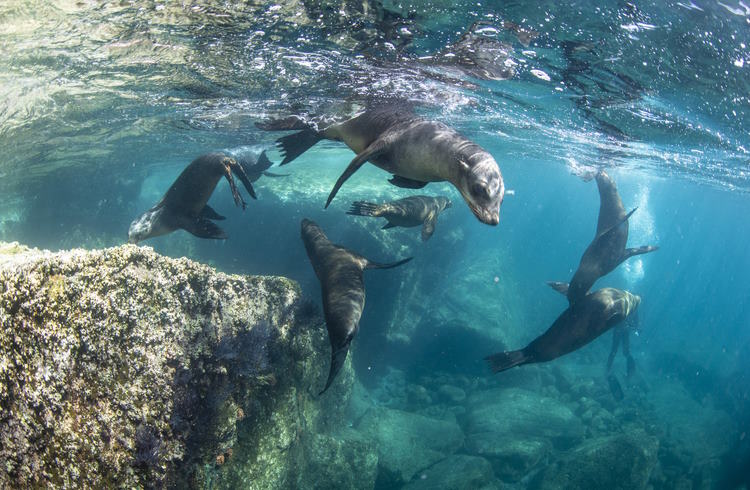
I geared up with a scuba tank and descended into the sea surrounding the boulders. We quietly navigated our way through murky, green waters. From time to time, sea lions flipped in the water, gliding beside us as we slowly made our way beneath the rocks and emerged on the other side of the cave. Later in the day, we continued on to Espiritu Santo, where we did a shallow dive near the shore and filled up on ceviche on the white sand beaches of this uninhabited isle.
It’s worth noting that while whale season runs during the winter into early spring, these months aren’t ideal for scuba diving. The visibility is limited, and the water is cold. Prime diving season is in October when the waters are clear and comfortably warm.
The area is also filled with spots for freediving and spearfishing. If you have a car, head to Ventana, a small coastal town about 45 minutes’ drive from La Paz. Ventana is known for its windy beaches and optimal kiteboarding conditions. Baja’s onshore adventures aren’t to be missed either. I recommend a cruise along winding desert roads to the region around Santiago, a town steeped in 18th century history from the Spanish occupation. Along the way, stop and hike through desert mountains to Cañón de la Zorra and swim in the pool at the base of the Cascada Sol de Maya waterfalls. After a day of adventures, take a soak in the Santa Rita hot springs surrounded by palm trees.
Discovering the secrets of Todos Santos
Tucked into a desert-sea oasis on the southwestern coast of the Baja peninsula is the once barely known town of Todos Santos. Today, the main road running through the town has a distinctly bohemian vibe, complete with chic cafes and boutique shops. The dusty side streets of Todos Santos are where the magic is at, in my opinion, and still hold the type of wonder the town once held before it was designated a haven for foreigners. Walking down dirt roads to deserted beaches was one of my favorite ways to take in the scenery, admiring open fields, the shadow of cacti dancing in the morning light, and brilliant orange and magenta bougainvillea crawling up dusty-rose adobe walls.

From quiet coastline with sea turtle hatchlings, to vibey beaches with music, crowds, and makeshift cocktail carts, you have your pick of beaches in Todos Santos. The whole area is known for its surfing, though Playa Los Cerritos draws the biggest crowds. La Pastora is a quieter option for surfing just a few miles north of town. However, the waves in Todos Santos can be immensely powerful in winter and the swells should only be attempted by experienced surfers during this season.
Todos Santos is best savored with a view. As the sun beat down on my shoulders, I followed the Sugar Port Trail up a meandering path to Punta Lobos. After a couple of miles, I arrived at a flat overlook, with crashing blue waves below. My curiosity led me past the viewpoint and down a steep trail to a quiet cove below. I scrambled across an empty beach of big, black boulders and soaked my feet in the cool water.
And after a day of long adventures in Todos Santos the thing to do is catch a sunset, of course. We sat down on a deserted stretch of sand, just a short walk from our house, and watched the waves roll out and come crashing back in with mesmerizing force, getting misted by sea spray. The sun slowly sank into the ocean, casting tangerine and golden reflections across the water. The moon rose and dusk gave way to a star-speckled sky, while crickets chirped in the distance.
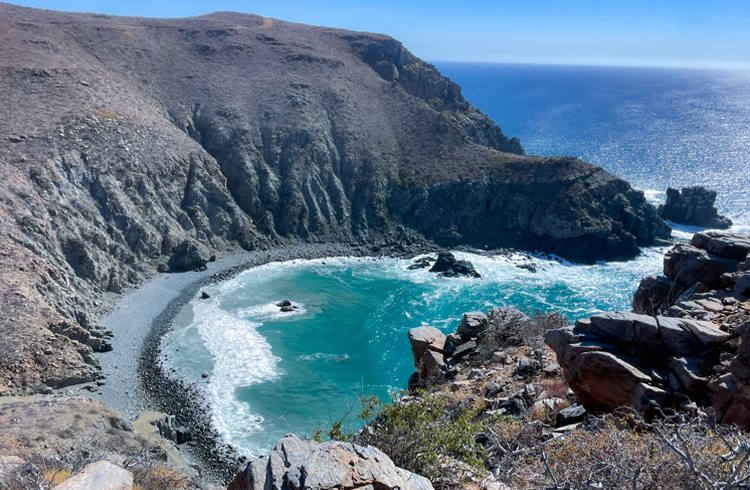
Getting around
Baja California Sur is ideally explored with your own set of wheels. As I planned the trip, I imagined myself taking in the freedom of the road and driving with open windows in search of hidden trails, hot springs, small coastal towns, and roadside taco stands.
These dreams were quickly dashed upon arrival to the car rental pick up at Cabo Airport, where we were handed a very steep and unexpected fee: an extra $700 in non-refundable car insurance through the car rental company. The company refused to accept insurance from credit cards or other companies and refused to give us the car without us paying the fee. In the heat of our standoff, we called other friends in our group who were at a different car rental company and learned they faced the same obstacle. Refusing to pay triple the cost of our rental in insurance alone, we walked to the side of the road feeling defeated. Fortunately, an employee of one of the rental car companies came to our rescue and drove us the three hours to La Paz in his own car.
We encountered this issue again when trying another rental car company in La Paz, so we shifted our plans. Uber operates to a limited extent in La Paz, which works to get around town and to beaches. InDrive, a regional rideshare app, was another great tool. The friendliness of locals was astounding, as we befriended many of our Uber drivers who took us on other trips through the region. And when all else failed? We hitchhiked. I wouldn’t always recommend hitchhiking but there were a few elements that made me comfortable doing so in this situation. I was with friends, the region is known for being quite safe, and hitchhiking is common here – we waited at most a minute for a ride to pick us up.
Related articles
Simple and flexible travel insurance
You can buy at home or while traveling, and claim online from anywhere in the world. With 150+ adventure activities covered and 24/7 emergency assistance.
Get a quote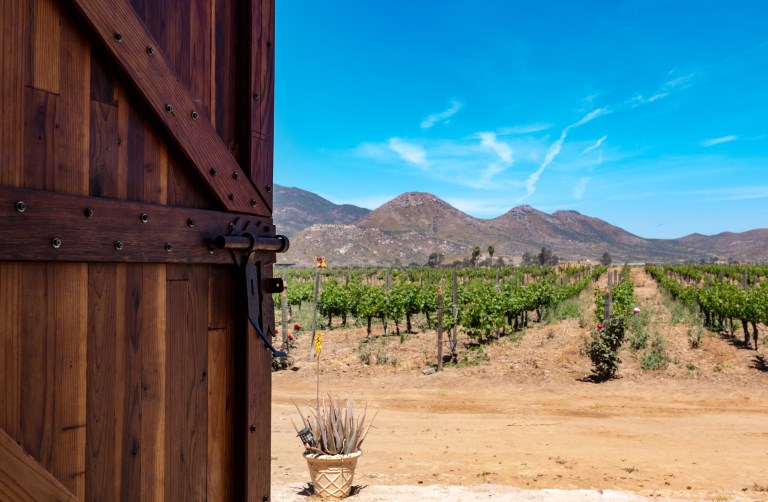

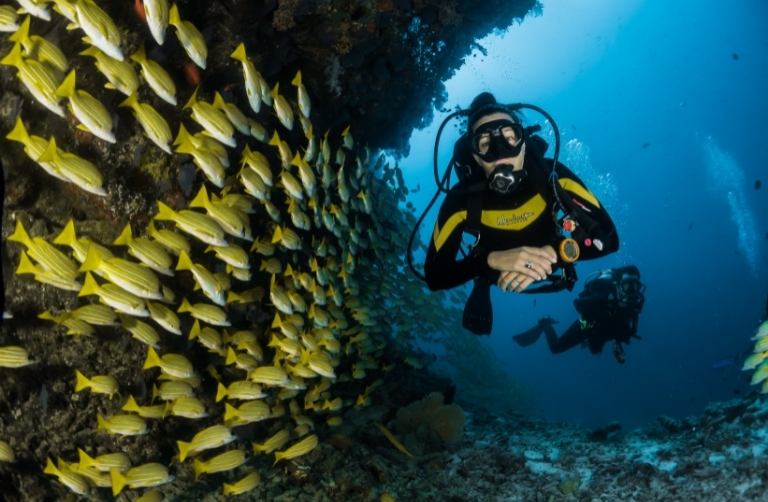
No Comments